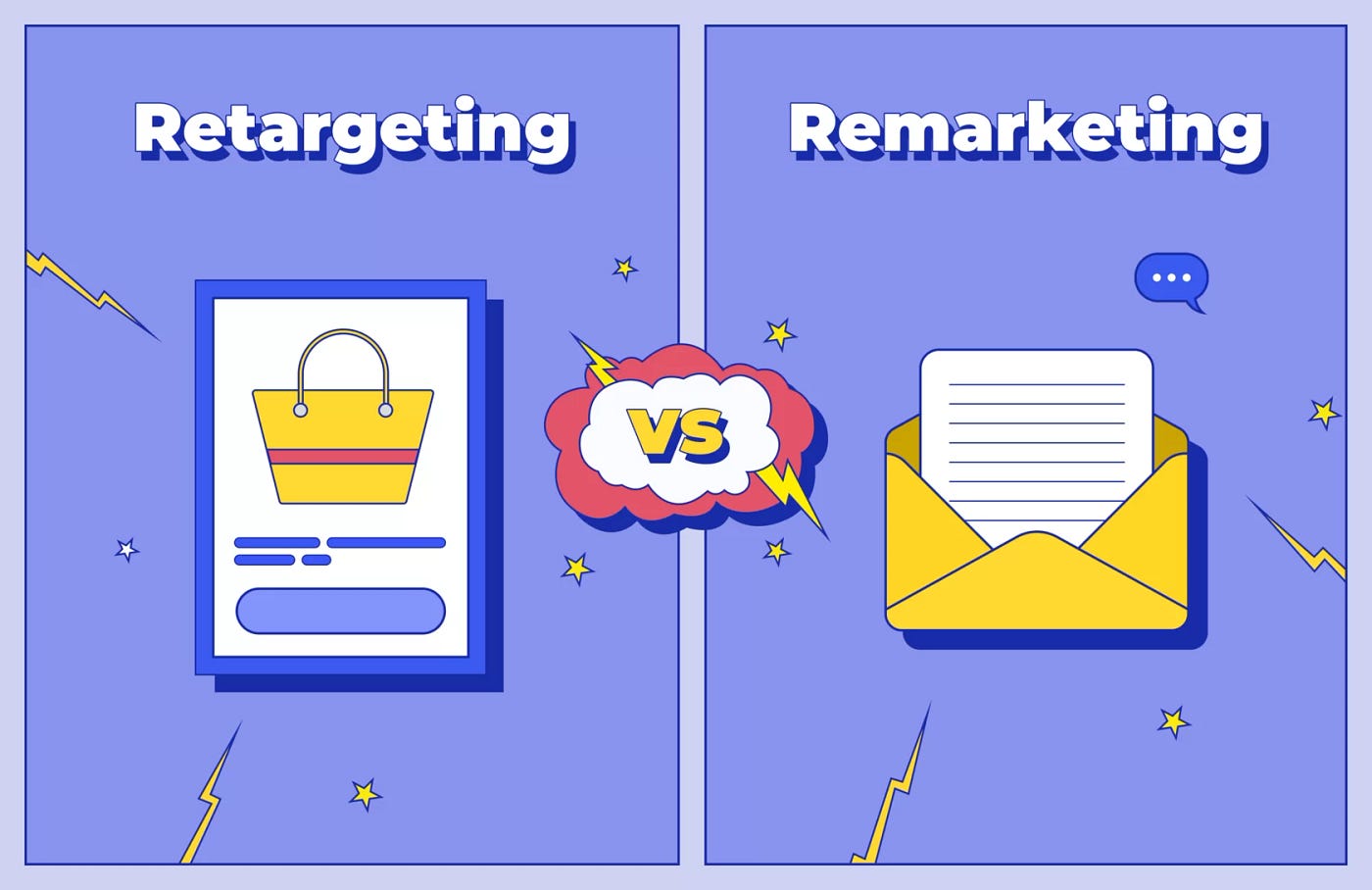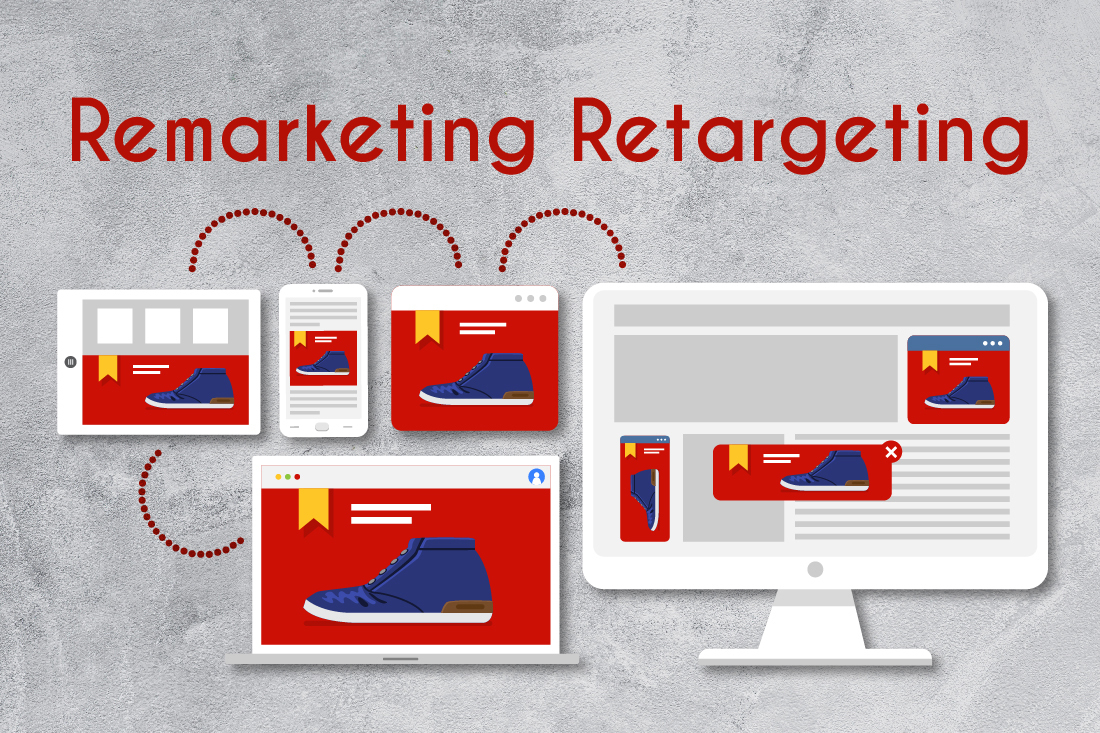In the fast-paced world of digital marketing, two strategies have proven highly effective for converting prospects into loyal customers: retargeting and remarketing. Despite their similarities, these techniques have distinct approaches and benefits. Let’s dive into what makes each unique and how you can leverage them to boost your marketing efforts.
Retargeting is a digital marketing strategy focused on re-engaging users who have previously interacted with your website or mobile app. It’s a way to remind potential customers of your products or services after they’ve left your site without making a purchase.
The Basics of Retargeting
At its core, retargeting works by placing a small, unobtrusive piece of code (known as a pixel) on your website. This pixel drops an anonymous browser cookie that tracks visitors as they navigate the web, allowing you to display targeted ads to them later.
How Retargeting Works
When a user visits your site and leaves without converting, the retargeting pixel triggers and follows them across other websites. For instance, a user who views a pair of shoes on your site might later see ads for those shoes on social media, news sites, or other platforms. This constant reminder encourages them to return and complete their purchase.

Remarketing, on the other hand, generally refers to the process of re-engaging customers via email marketing campaigns. It’s about reaching out to those who have already interacted with your brand but haven’t yet converted.
Key Features of Remarketing
Remarketing typically involves sending personalized emails to your customer base. These emails might include special offers, product recommendations, or reminders about abandoned shopping carts. The goal is to rekindle interest and drive conversions.
Remarketing vs Retargeting
While retargeting and remarketing share similar goals, they employ different methods. Retargeting uses paid ads to recapture interest, whereas remarketing often leverages email campaigns. Understanding these differences can help you decide which strategy aligns best with your marketing goals.

Retargeting can significantly enhance your marketing efforts by keeping your brand top of mind for potential customers who are already familiar with your offerings.
Increased Conversion Rates
By reminding users of the products they showed interest in, retargeting ads can effectively increase conversion rates. These ads act as gentle nudges, encouraging prospects to finalize their purchases.
Improved Brand Recall
Consistent exposure to your brand through retargeting ads helps improve brand recall. Even if users don’t convert immediately, they are more likely to remember your brand when they are ready to make a purchase.
Remarketing offers its own set of advantages, particularly in terms of personalization and cost-effectiveness.
Cost-Effectiveness
Remarketing campaigns, especially those conducted via email, can be more cost-effective compared to other marketing strategies. They leverage your existing customer data to deliver targeted messages at a fraction of the cost of paid ads.
Personalized Customer Experience
Remarketing allows for highly personalized communications. By analyzing customer behavior and purchase history, you can tailor your messages to meet individual needs, enhancing the overall customer experience.

To maximize the impact of your retargeting campaigns, it’s crucial to employ strategic approaches.
Segmenting Your Audience
Segmenting your audience based on their behavior and interactions with your site allows for more precise targeting. For example, users who abandoned their shopping carts might respond differently to ads compared to those who simply browsed product pages.
Ad Frequency and Timing
Finding the right balance in ad frequency and timing is essential. Too many ads can lead to ad fatigue, while too few might not make a lasting impression. Testing different frequencies and timings can help you find the sweet spot.
Similarly, successful remarketing requires thoughtful planning and execution.
Leveraging Email Campaigns
Effective email campaigns are the cornerstone of remarketing. Craft compelling, personalized emails that resonate with your audience. Include special offers or discounts to entice recipients to take action.
Utilizing Dynamic Ads
Dynamic ads that automatically adjust content based on user behavior can greatly enhance your remarketing efforts. These ads ensure that the most relevant products or services are highlighted, increasing the likelihood of conversion.

Despite their effectiveness, retargeting and remarketing come with their own set of challenges.
Ad Fatigue
Ad fatigue occurs when users see the same ads too frequently and begin to ignore them. To combat this, refresh your ad creatives regularly and rotate different messages to keep your audience engaged.
Privacy Concerns
With increasing privacy regulations and consumer awareness, it’s vital to handle user data responsibly. Ensure your campaigns comply with GDPR and other relevant laws, and be transparent about how you collect and use data.
Future Trends in Retargeting and Remarketing
The landscape of digital marketing is continually evolving, and staying ahead of trends can give you a competitive edge.
AI and Machine Learning
Artificial Intelligence (AI) and machine learning are transforming retargeting and remarketing. These technologies enable more precise targeting and personalization, leading to higher conversion rates.
Cross-Device Retargeting
As consumers use multiple devices throughout their purchasing journey, cross-device retargeting ensures a seamless experience. This approach tracks users across different devices, providing consistent messaging and improving the chances of conversion.
Understanding the nuances between retargeting and remarketing can significantly enhance your digital marketing strategy. By leveraging both techniques, you can create a comprehensive approach that re-engages potential customers and drives conversions. Remember to keep your campaigns fresh, personalized, and compliant with privacy regulations to achieve the best results.
© 2024 Netsqure. All Rights Reserved.